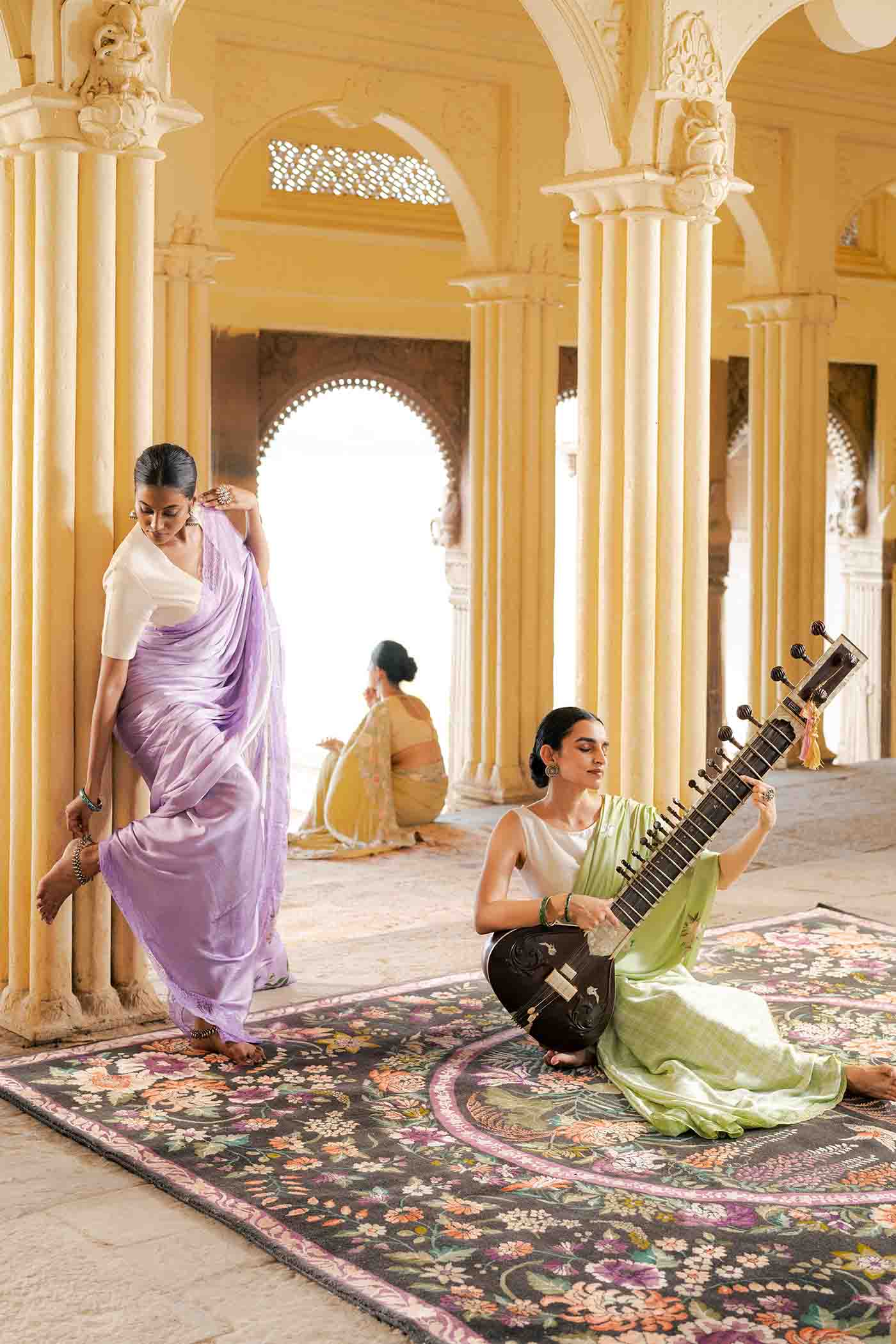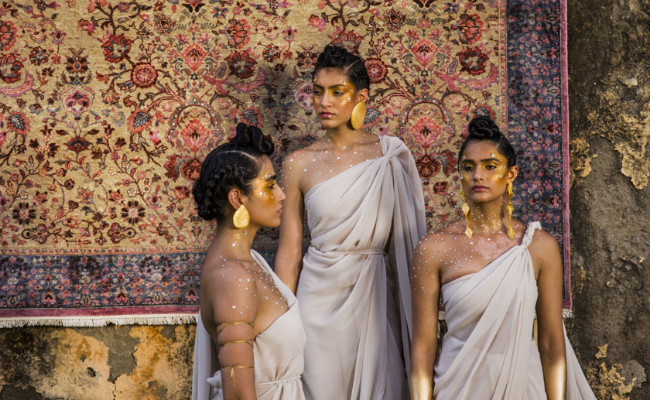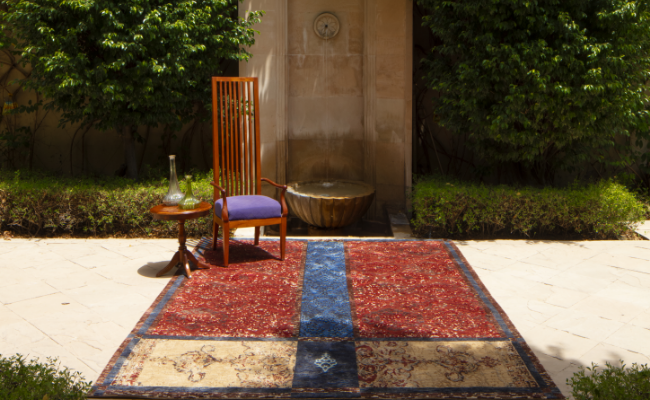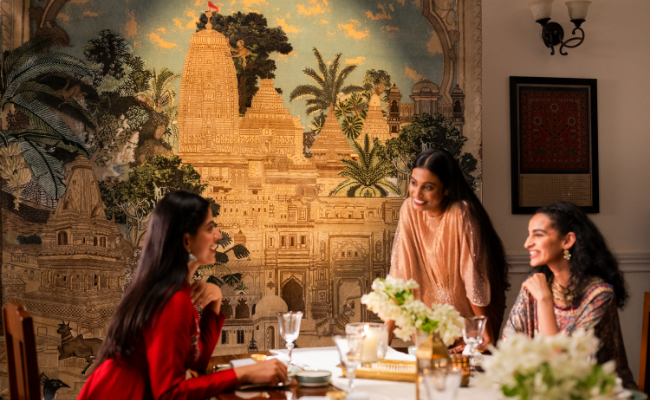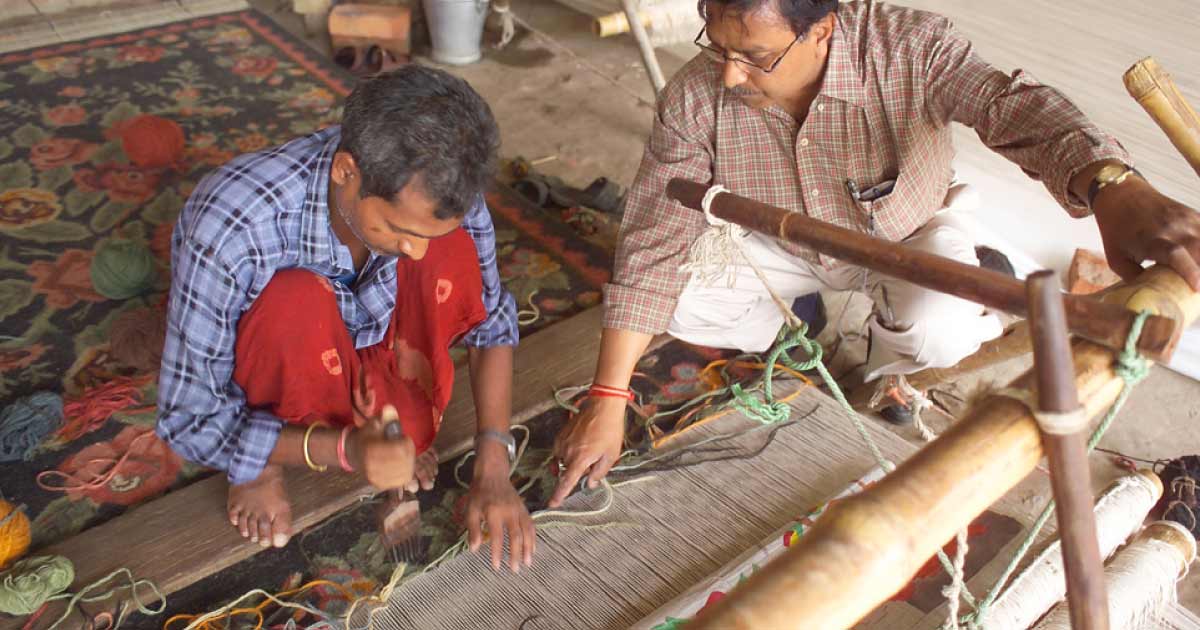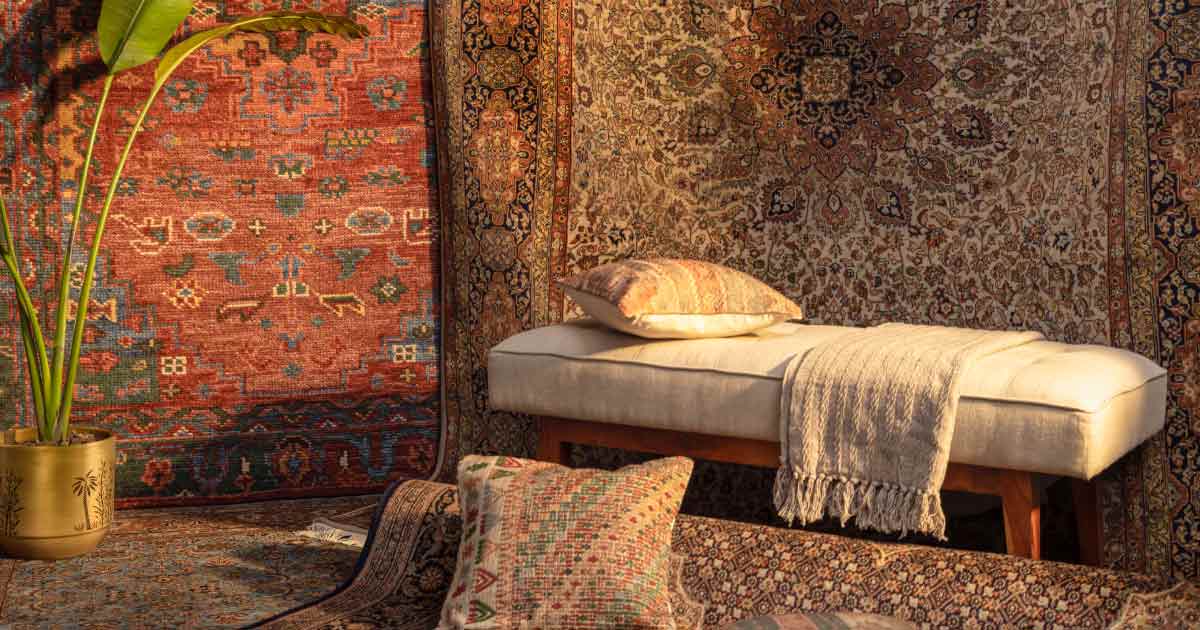
The Different types of handmade carpets: Exploring the diversity of materials and techniques
Handmade carpets are works of art that can bring beauty and sophistication to any space. They are crafted using a variety of techniques and materials, and each type of handmade carpet has its own unique characteristics and style. The diversity of materials and techniques used in creating these carpets is fascinating, and it is crucial that we know the various distinctive elements that make each one of them so special. So that the next time we step out to buy the most perfect rug for our home, we know which one to go for. In this blog, let us explore the diversity of materials and techniques used in handmade carpets.

Persian Carpets
Persian carpets are perhaps the most famous type of handmade carpet. They are known for their intricate designs and high quality craftsmanship. They are crafted using a variety of materials including wool, silk, and cotton. Each individual knot is tied by hand in a Persian carpet. This process can take months or even years to complete, depending on the size and complexity of the carpet.
One of the most unique features of Persian carpets is their design. Persian carpets often feature intricate floral and geometric patterns, which are influenced by the region's history, culture, and religion. Each pattern is symbolic and has a special meaning.
Persian carpets have been woven for over 2,500 years and are considered to be the pinnacle of the carpet-weaving art. They are renowned for their quality, durability, and beauty.
These furnishings were not originally made for export. Instead, they were created for local use in Persia, which is now modern-day Iran. However, in the 16th century, Persian carpets began to be exported to Europe and other parts of the world, where they quickly became highly sought after for their beauty and quality.
Soon enough, this magic reached India when Persian weavers were brought to the country by the Mughal emperors in the 16th century. These weavers brought with them the techniques and designs that they had been using to create Persian carpets, and soon began to create carpets that combined Persian and Indian styles. These carpets became known as Mughal carpets and are highly prized for their intricate designs and exquisite craftsmanship.
Turkish Carpets
Turkish carpets are another popular type of handmade carpet. They are known for their bold colours and unique designs. Turkish carpets are made using a variety of materials including wool, silk, and cotton.
Unlike Persian carpets, which are typically made using the asymmetric knot, Turkish carpets use the double-knot technique, also known as the Turkish or Ghiordes knot. This knotting technique results in a more durable carpet, as the knots are tightly packed and less likely to come loose over time.
Turkish carpets are known for their bold colours and unique designs. They are often woven using bright reds, blues, and greens, which are inspired by the region's natural landscapes.
Turkish carpets have a long and rich history, dating back to the 13th century. They were traditionally made by nomadic tribes using wool from their own sheep, and were often used as floor coverings, wall hangings, and even tents.
Moroccan Carpets
Moroccan carpets are known for their tribal designs and earthy colours. Moroccan carpets are made using a variety of materials including wool and cotton.
One of the unique features of Moroccan carpets is their texture. They are often woven using a technique called the Berber knot, which creates a plush and shaggy texture. These carpets are often woven by women in rural areas using traditional techniques that have been passed down from generation to generation. Each carpet is unique and tells a story about the weaver's life and culture. They often feature a diamond-shaped pattern called a "lozenge." This pattern is a traditional motif in Moroccan weaving, and is thought to symbolize fertility and femininity. The lozenge shape can be seen in a variety of different styles of Moroccan rugs, from the bold and colourful to the more muted and minimalist.
Indian Carpets
During the Mughal era (16th-19th centuries), carpet weaving became a highly prized art form in India, with the Mughal emperors themselves often commissioning grand carpets for their palaces and courts. The Mughal carpets were known for their intricate designs, bold colours, and use of expensive materials such as silk and gold threads.
Over time, carpet weaving spread throughout India, with different regions developing their own unique styles and techniques. Today, India is one of the world's largest producers of handmade carpets, with carpets being woven in many different styles and designs, from the traditional and ornate to the modern and minimalist.
Indian carpets are known for their intricate designs and vibrant colours. They are made using a variety of materials including wool, silk, and cotton. Often hand-knotted, each individual knot in these carpets is tied by hand. They often feature intricate floral and paisley patterns, which are influenced by the region's history and culture.
Tibetan Carpets
Tibetan carpets are known for their unique style and texture. They are made using a variety of materials including wool and silk. Tibetan carpets are often hand-knotted, which means that each individual knot is tied by hand.
One of the unique features of Tibetan carpets is their texture. Tibetan carpets often feature a high pile, which creates a plush and comfortable surface. When it comes to design and motifs, the furnishings often feature traditional Tibetan symbols and motifs, such as the lotus flower, the endless knot, and the eight auspicious symbols. These symbols are important in Tibetan Buddhism and are believed to bring good luck and positive energy into a space.
A unique design element of Tibetan carpets is their use of highland wool, which comes from sheep that are raised in the high-altitude regions of Tibet. This wool is known for its strength, durability, and softness, making it an ideal material for carpet weaving. Tibetan carpets also often feature bold geometric designs and vibrant colours, reflecting the region's rich cultural heritage and artistic traditions.
In conclusion, handmade carpets are a reflection of the cultural and artistic heritage of their makers. The techniques and materials used in creating these carpets are as diverse as the regions they come from. Whether you're looking for a Persian carpet with intricate designs or a Kilim carpet with bright colors, there's a handmade carpet out there that's perfect for your needs.


